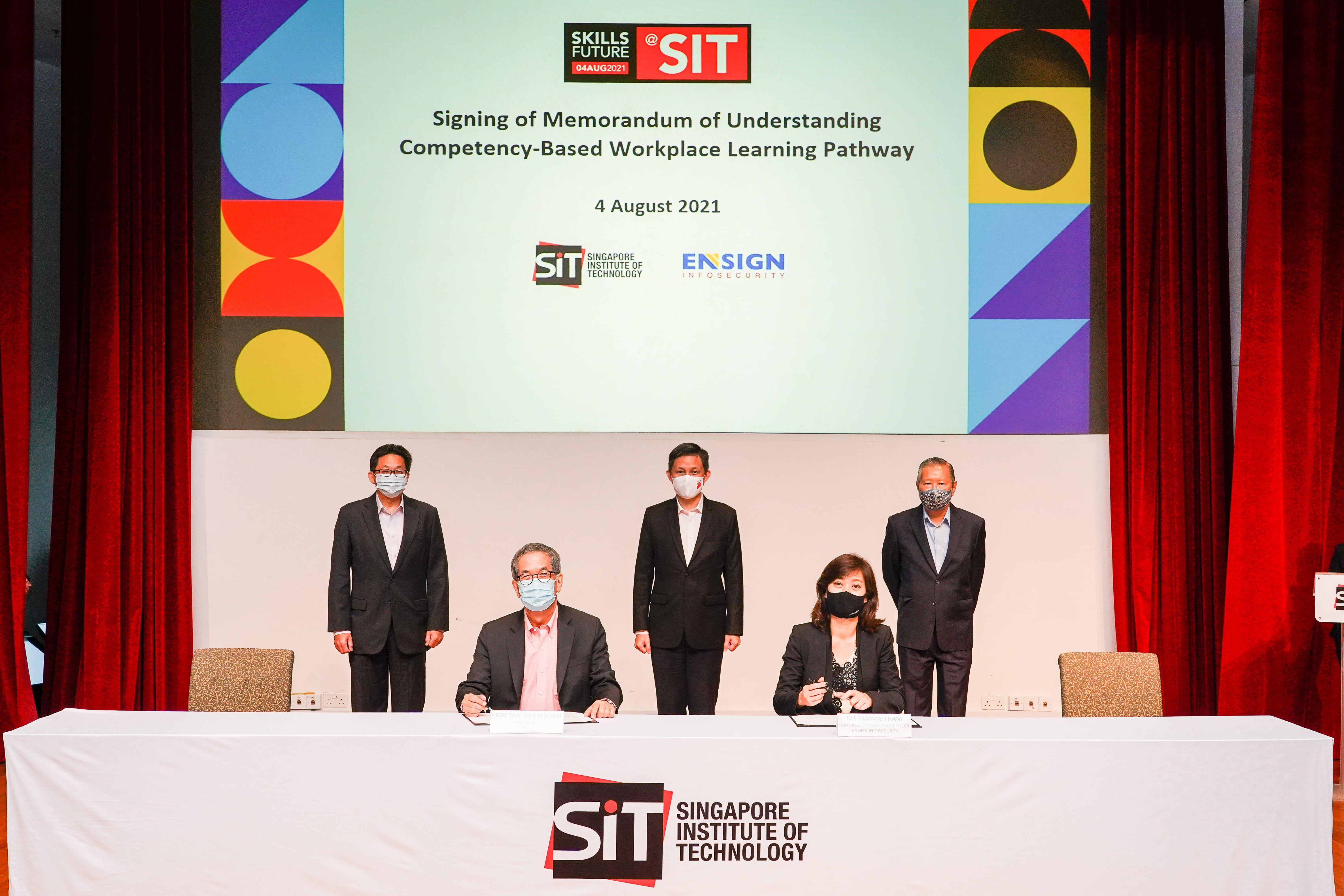This Singapore university is training cybersecurity and transport experts in the workplace
By Singapore Institute of Technology
The Singapore Institute of Technology (SIT) shares how it bridges the gap between work and study with a new workplace learning pathway.

The Singapore Institute of Technology (SIT) has launched a new upskilling pathway to help those in the workforce deepen their knowledge and obtain a university degree, without having to take a break from employment.
Upskilling for working adults
SIT’s new competency-based workplace learning pathway will allow employees to obtain their bachelor’s degree while working. Previously, those eager to gain new skills had to take time off work to pursue a degree or do a part-time degree, both of which may affect productivity for companies.
The university has introduced a new approach to recognise skills learned on the job. Academic staff will be able to assess these skills and award credits that could help employees earn a degree in a shorter time.
SIT is the first local autonomous university to launch such a competency-based upskilling pathway for workers returning to study. It is working closely with industry partners to pioneer this new mode of learning.
Cybersecurity and Transport
The university is piloting this pathway for two of its existing degree programmes: information security and sustainable infrastructure engineering. It has partnered with leading cyber security and land transport organisations, including Ensign InfoSecurity, the Land Transport Authority, SBS Transit and SMRT Corporation.
“As we scale up the innovation value chain with advances in technologies, companies will need higher skilled talents. Employers we have spoken to have indicated their wish to retain their existing talents by helping them to level up their skills while in employment. This is when we realise the need for workplace learning,” said Professor Chua Kee Chaing, President-designate, SIT.
“Our competency-based workplace learning pathway recognises that learning takes place in the work that the employees do, and knowledge gaps needed for the degree certification are then addressed through curated learning projects that the learners undertake at work. This will help to ensure that the degree programme is directly applicable to the company’s (real-world) needs,” he added.
Building the capabilities of transport workers will aid Singapore’s plans to construct new rail lines and improve the reliability of transport networks. The new pathway is another step in developing local talents with rail expertise, said Ng Lang, Chief Executive of the Land Transport Authority.
The performance of this upskilling pathway will be closely tracked by SIT together with industry partners to ensure academic rigour.
Being learner-centric

The competency-based workplace learning pathway is designed with the schedules and well-being of workplace learners in mind.
Lecturers can provide teaching instructions at a personalised learning pace through online platforms such as Zoom or SIT’s online learning management platform, ‘xSITe’. This offers the much-needed flexibility to minimise disruption to learners’ work or personal lives, as well as to ensure the academic rigour needed to help graduates integrate well into the workforce.
The pathway will supplement classroom learning with industry experience. While on campus, students will engage in lab work, discussions and assessments. At work, they will take on projects that are tailored for the curriculum. This will allow them space to develop their professional interests.
“This partnership with SIT will provide a much-needed pathway for cyber professionals to deepen their knowledge while being employed,” said Mr Lee Fook Sun, Chairman of Ensign InfoSecurity. “This will help build strong localised cyber-defence capabilities and nurture a sustainable workforce to defend our cyberspace.”
The workforce needs to stay on top of changing needs and innovations. As the demands of global economies keep evolving, SIT will adapt its curriculum swiftly to help employees level up.
It is a long, but exciting, road ahead.
Feature image by SIT: MOU signing between SIT and Ensign InfoSecurity. Witnesses (standing, from left): Mr Ng Yat Chung, Chairman, Board of Trustees, SIT; Mr Chan Chun Sing, Minister for Education; Mr Lee Fook Sun, Chairman, Ensign InfoSecurity. Signatories (from left): Professor Tan Thiam Soon, President, SIT; Ms Tammie Tham, Group CEO, Ensign InfoSecurity.
